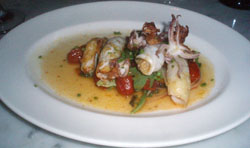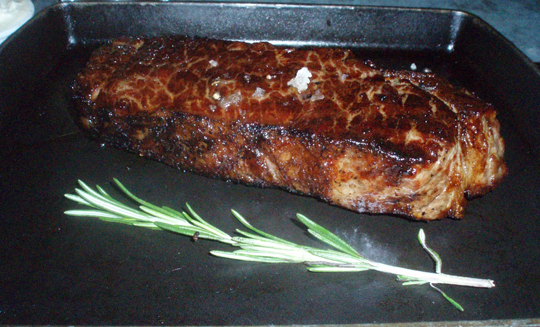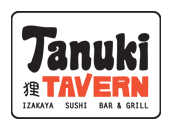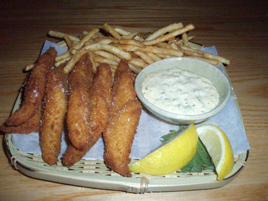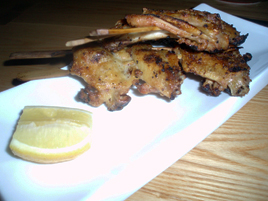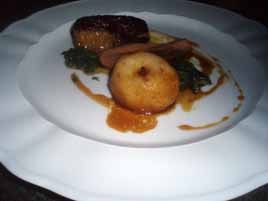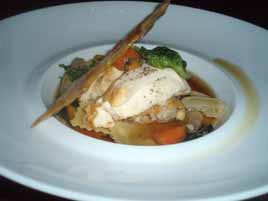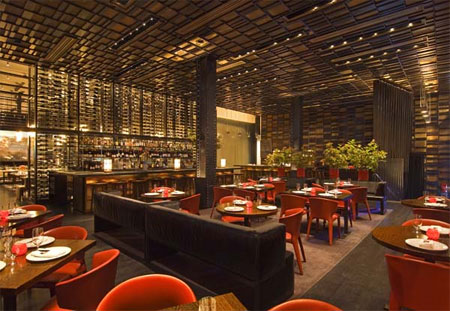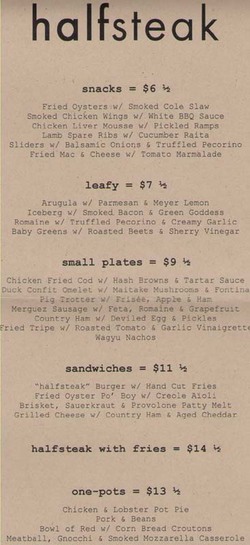Willow Road
 Monday, January 14, 2013 at 07:14PM
Monday, January 14, 2013 at 07:14PM Note: Willow Road closed in November 2014. It turned into a private event space for Toro, its nearby sister restaurant.
*
 Willow Road has been open since early December in the old John Dory space, sandwiched between Colicchio & Sons and Del Posto. Why the Dory failed here remains a mystery to me, but the venue stood vacant for more than three years.
Willow Road has been open since early December in the old John Dory space, sandwiched between Colicchio & Sons and Del Posto. Why the Dory failed here remains a mystery to me, but the venue stood vacant for more than three years.
The new owners, coming from a nightlife background, have decidedly modest ambitions. They brought in Todd Macdonald, a former chef at Cru, and Grayson Schmitz, a former Top Cheftestant, to serve a bunch of comfort-food dishes that look like Quick Fire challenges. Open till 3:00 am, it’s a boozier, less elaborate Stanton Social.
The menu is organized around “Bites” ($6–9), Small Plates ($12–18), Large Plates ($15–34), and Side Dishes ($8). The server pushed us to over-order, but we held firm at two small and two large plates, which was enough for us, but might not be for you. I suspect many of the guests here will be visiting more than one dining/boozing location in an evening. Two plates a person is probably enough.


The Spiced Lamb Burger Bites ($12; above left) are excellent, and were gone far too quickly. As always, these sharing establishments send out three pieces for a party of two. I’d much rather have a second order of those than the very dull Duck Confit Salad ($16; above right).


Buttermilk Fried Chicken ($18; above left) is coated in an appealing crust of jerk spices and orange blossom honey. The plate looks small in the photo, but there are three pieces there. Mac N’ Cheese ($15; above right) is deceptively named. The noodles are more like half-length penne tubes, with an appealing mix of sweet sausage, lemon, fennel pollen, and parsley. It’s probably too cloying to order for yourself, but very good to share.
Three out of four items were just fine, bearing in mind the restaurant’s low aims. The menu is fairly small, with just nine “bites” and small plates, and just eight of the larger ones. It’s not upscale, but it’s not entirely cliché either, as such places often can be.
They’ve redone the space admirably, with reclaimed wood, subway tile, and a terrific hand-painted mural depicting the neighborhood by James Gulliver Hancock. We were seated at a two-top, but there’s also an ample bar and at least one long communal table. The scene is louder than I’d like, but the oldies sound track was palatable.
The staff paid plenty of attention to us; coats were checked and reclaimed efficiently. Although the “sharing plates” meme feels outdated already, at least the food was sent out in a logical order, and not all at once. You can never take that for granted at these establishments.
I can’t imagine what would bring us back to Willow Road, but for its intended audience it’s pretty good. The space was hopping on a Wednesday evening. If the management can keep people coming back, they might have something going.
Willow Road (85 Tenth Ave between 15th & 16th Streets, Chelsea)
Food: Stoner cuisine, re-imagined
Service: Attentive and well managed
Ambiance: A gastro-bar, with the emphasis on “bar”
Rating: ★
Why? Satisfies a need for the area; not worth going out of the way



